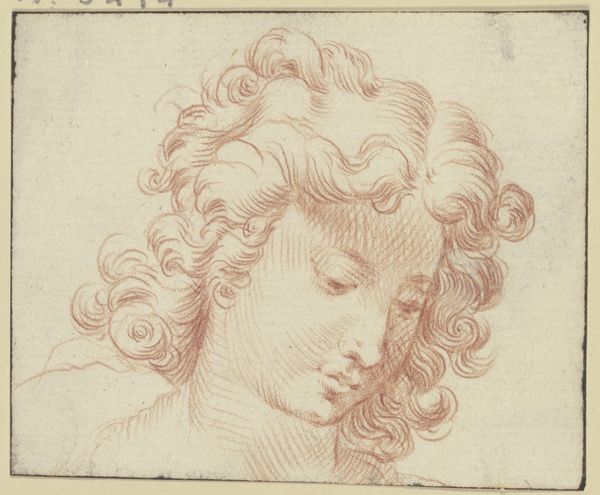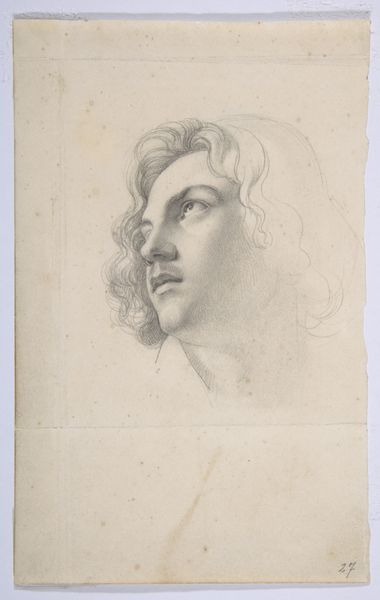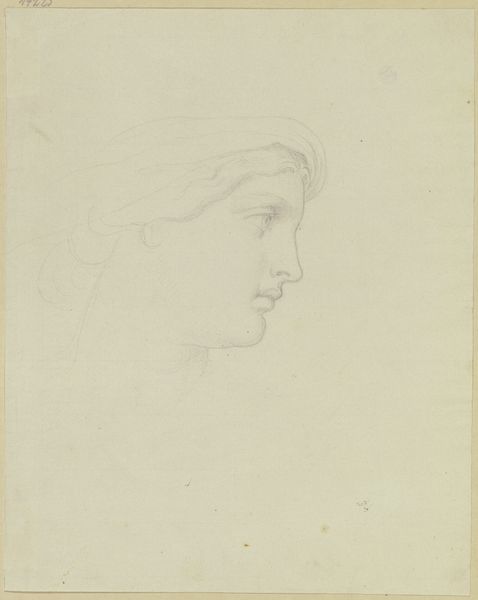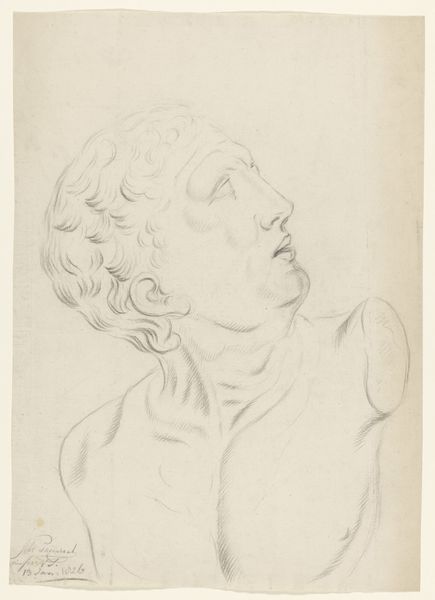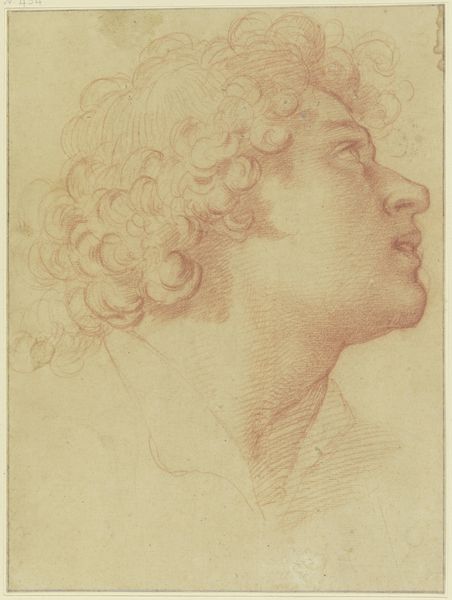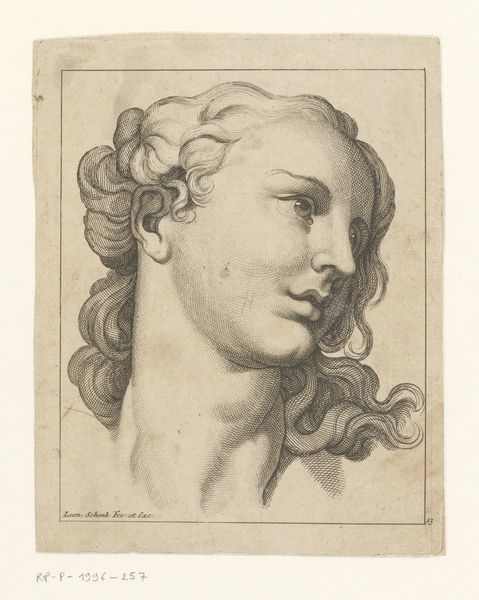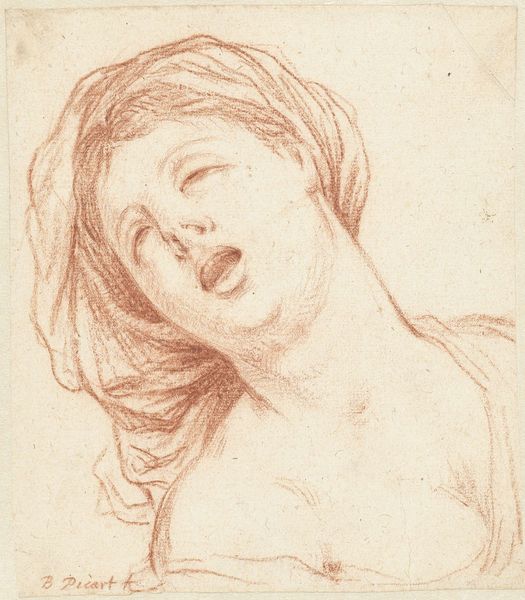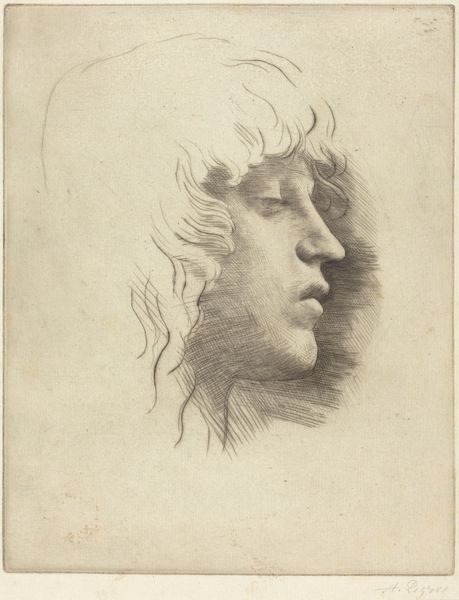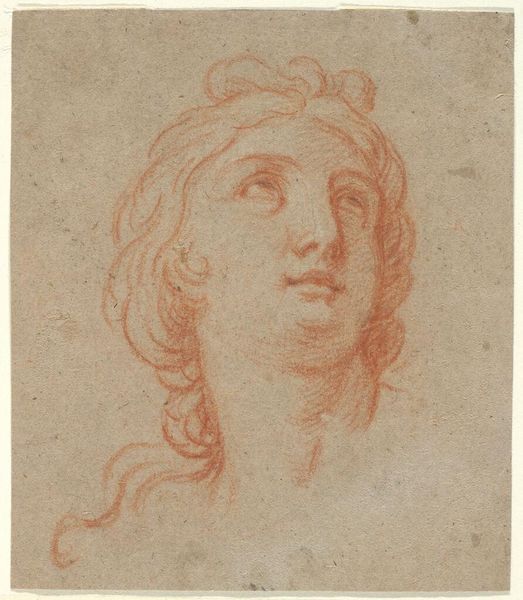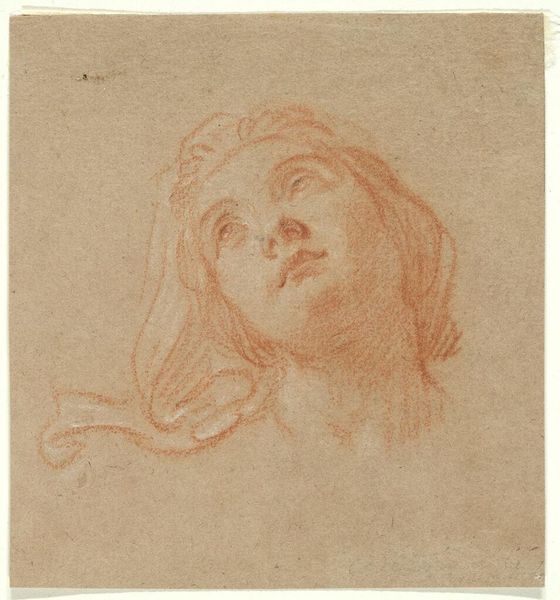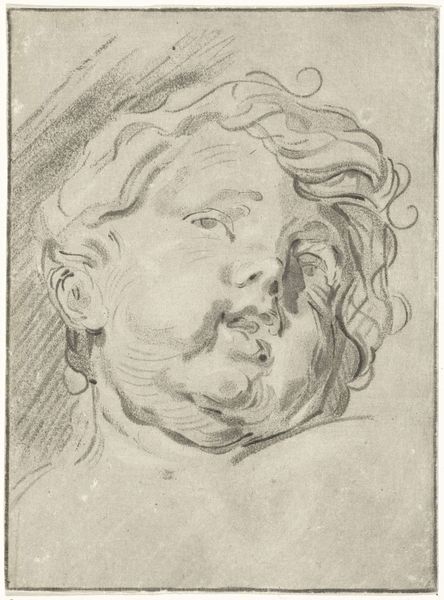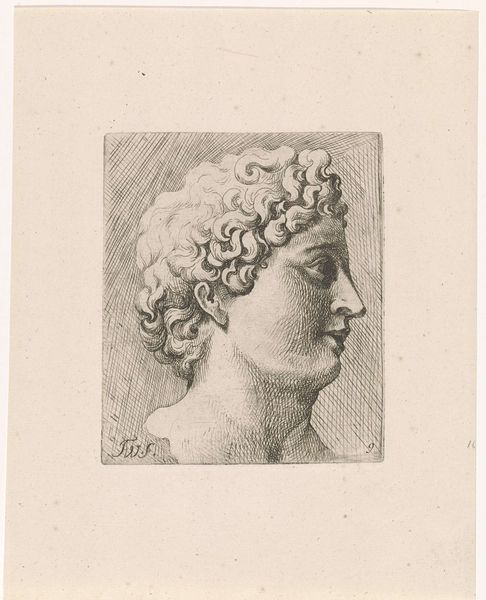
drawing, pencil
#
portrait
#
drawing
#
baroque
#
pencil drawing
#
pencil
Dimensions: height 238 mm, width 191 mm
Copyright: Rijks Museum: Open Domain
Curator: Up next, we have "Head of a Boy with Long Hair," a pencil drawing by Bernard Picart, likely created sometime between 1683 and 1733. It is currently housed here at the Rijksmuseum. Editor: There's a delicacy to this portrait. The soft lines and reddish hue give the figure a dreamy quality, almost like he's caught in a fleeting moment of introspection. The grid lines, however, disrupt that tranquility. Curator: The grid is integral to the materiality. This suggests a production method of careful measurement, almost a scientific dissection of the human form through calculated marks, probably used for scaling or transferring this drawing. This contrasts sharply with the almost sensual rendering of the subject’s hair and facial features. Editor: It does raise questions about artistic agency. Was Picart free to imbue emotion, or was he a craftsman adhering strictly to commission and process? We see that tension frequently in depictions of young, idealized subjects. There's often a performance of innocence overlaid with an appeal to power structures, both economic and social. This makes the model’s very androgynous look all the more interesting. Curator: Indeed, that very ambiguity perhaps broadens this artwork’s accessibility to different audiences through time. Moreover, it is not only the figure represented which should concern us, but the physical act of producing art. Here, the lines delineate stages, but the application, with red pencil instead of lead, could refer to blood or warmth in ways we do not generally note with artworks produced by the hand. Editor: Placing Picart within the broader context of Baroque portraiture complicates, as the period tended to portray idealized versions of aristocratic males as both desirable and in positions of power, a reinforcement of social norms of that day. However, the drawing style and his age both offer the artwork more than its share of subversive content. Curator: Right, a convergence of many threads relating to gender, craft, and class during its production that ripple down to the artwork today. Editor: Absolutely. The figure may be timeless, but this image of an idealized figure reveals the period’s norms about representation, beauty, and production.
Comments
No comments
Be the first to comment and join the conversation on the ultimate creative platform.
